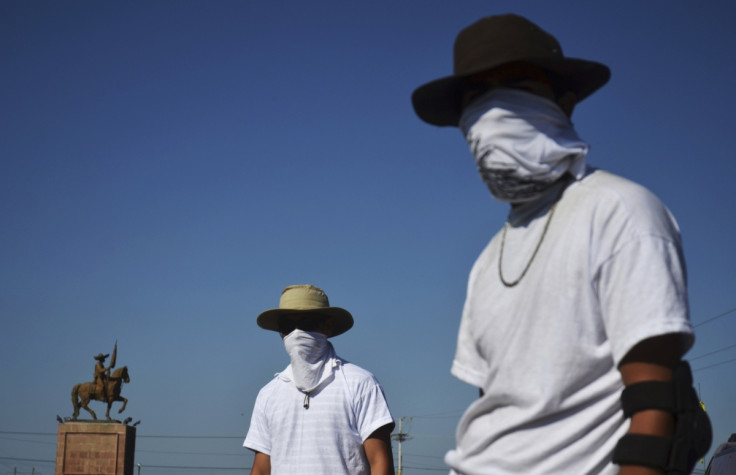Mexican Priests Lead Fight Against Knights Templar Drug Cartel

Priests are leading the fight against the feared Knights Templar drug cartel in Mexico's Michoacan province.
In an area where armed vigilantes, exasperated by years of collusion between drug gangs and local police, have recently taken control of 15 townships, priests have denounced corruption and exhorted the downtrodden meek to take up arms.
"I am calling on the people to rise up with what dignity, shame and balls they have left," Apatzingán priest Father Gregorio López told the Guardian. "If the horse doesn't want to move, you have to use your spurs."
For years, the southwestern state has been in the grip of the Knights Templar cartel, which has transformed it into a base for the production of methamphetamine as well as marijuana and cocaine.
Having taken the name of an ancient order of knights, and even adopted a pseudo-chivalric code, the cartel has long held the province in fear, until a group of locals picked up arms and fought back.
For 11 months they fought alone, expelling the gang from towns and driving out corrupt police and politicians.
Last week interior minister Miguel Angel Osorio Chong sent in federal troops to quell the violence, halting the vigilantes before they could attack the Templar stronghold of Apatzingan.

Osorio Chong demanded the rebels disarm, but many refuse to do so under threat of reprisals from the Templars.
Today, priests across Apatzingan diocese, the focus of the fighting, will read a letter from Bishop Miguel Patino Velazquez in which he denounces the federal government for failing to bring the cartel leaders to justice.
"Their leaders are fully identified and yet no authority stops them," the letter says.
He says that as in the Nazi era, priests ought to take an active role in combating violence, not just consoling the victims.
"We ask politicians, the government and the Interior Secretariat to give people of our region clear signals that in reality they want to halt the 'killing machine,'" Patino writes.
The region has a long history of clerical resistance. During the 1926-1929 Cristero War, priests led a counterrevolution after thousands were killed in anti-Catholic persecutions.
Many remain deeply suspicious of the government and its claim it is on the side of the vigilantes.
Andres Larios Chavez, a parish priest in Coalcoman, a town in the province, said: ""The government and the Templars are the same thing," he said. "The campaigns of the state officials are financed by them.
"The government did things backwards. Instead of disarming the criminal organisation, it went into towns that finally had some peace and tried to disarm the self-defence groups," he said.
© Copyright IBTimes 2025. All rights reserved.




















